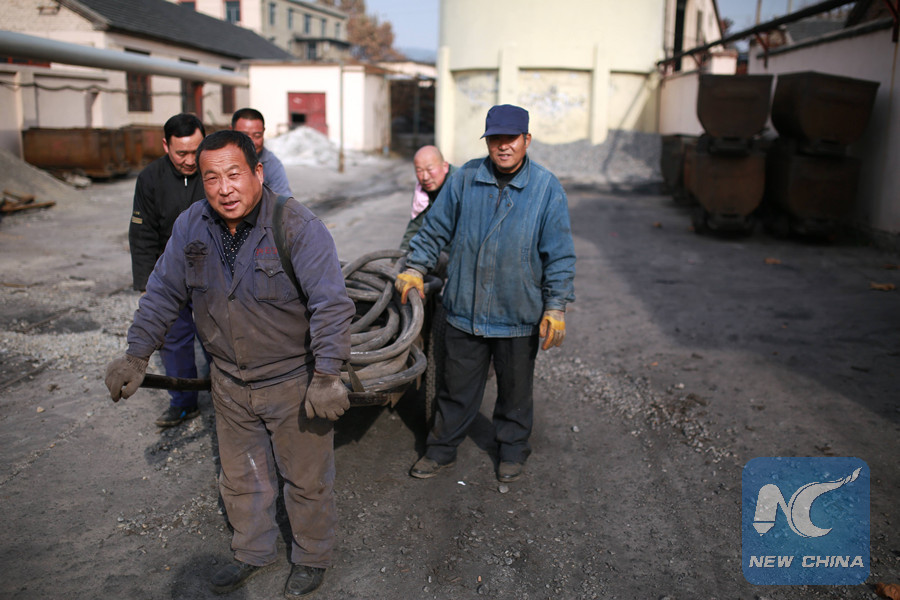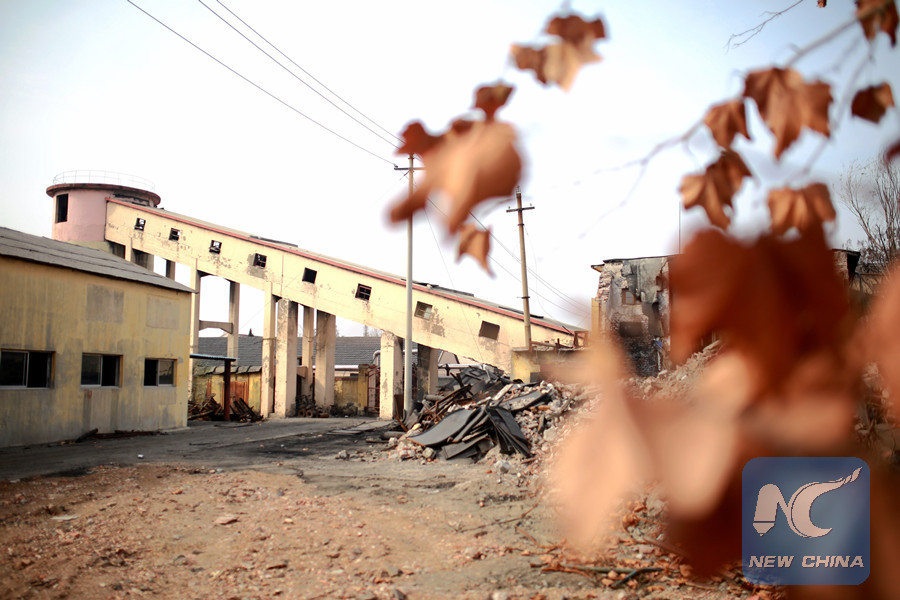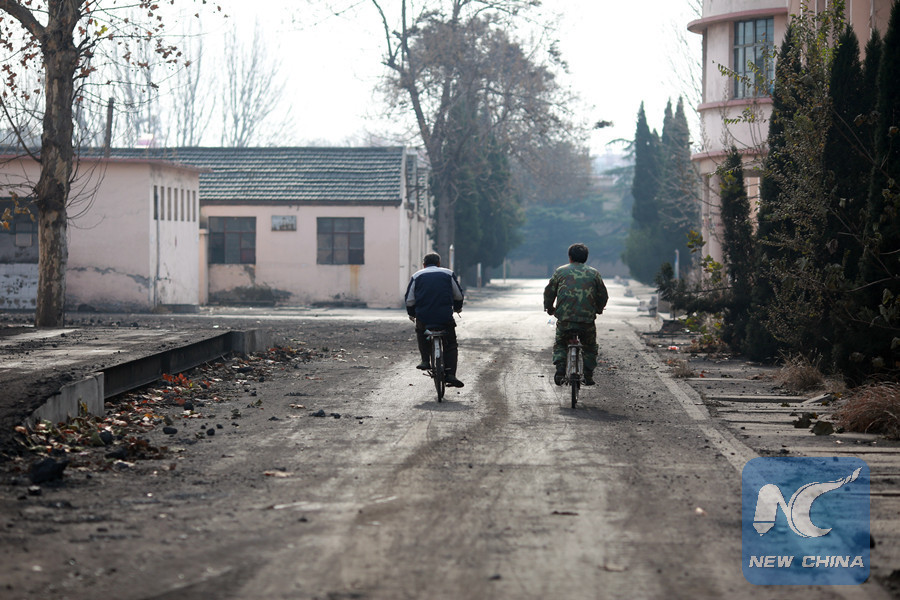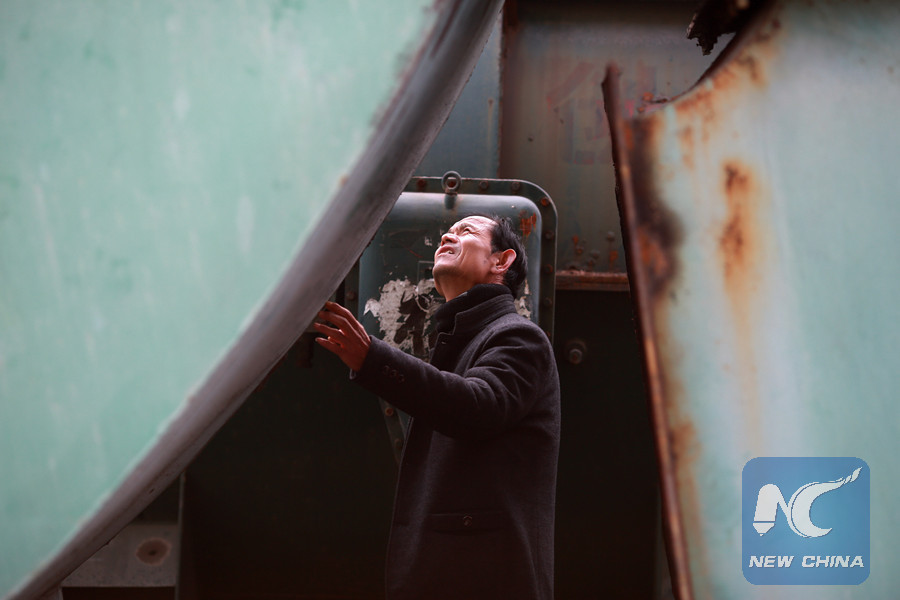
Miners carry out cables from the shaft underground on Nov. 29, 2016. (Xinhua/Wang Yang)
Wang Zijia is leaving Taozhuang Coal Mine in east China's Shandong Province, where he has been working for 38 years.

Wang Zijia walks by a coal pile on Nov. 29, 2016. (Xinhua/Wang Yang)
China has been closing steel and coal companies with poor profits and low productivity as the two sectors have been plagued by overcapacity. Shandong, the country's 5th largest coal producing base, has planned to reduce coal producing capacity by more than 16 million tonnes.

Photo taken on Nov. 29, 2016 shows abandoned coal processing facilities. (Xinhua/Wang Yang)
Taozhuang Coal Mine is one of the 58 coal producing entities Shandong Province has planned to shut down in 2016.

Two miners ride bikes back home on Nov. 29, 2016. (Xinhua/Wang Yang)
According to local records, people here started mining coal more than 300 years ago, but the first mining company in Taozhuang was built in the early 1920s.

A miner is moving coal on Nov. 29, 2016. (Xinhua/Wang Yang)
Wang is one of the miners who have been allowed to stay on to gather mining equipment and cables from shafts underground and to make way for full closure of the coal mine.

Wang Zijia checks equipment on Nov. 29 2016. (Xinhua/Wang Yang)
"Mining has never been an easy job," says Wang, who has been working on the mine since adulthood, so did his father and son.

Miners take break on Nov. 29, 2016. (Xinhua/Wang Yang)
"Leaving is even more difficult, but people will come around," says Wang. He believes the government's policy will eventually benefit miners like him. "After all, there will be nothing left to dig one day."

Photo taken on Nov. 29, 2016 shows a dog in front of the abandoned houses. (Xinhua/Wang Yang)
Local governments have been required to give financial support to and create jobs for workers made redundant by the cuts. In May, the Ministry of Finance announced 100 billion yuan (about 14.5 billion U.S. dollars) of aid for steel and coal companies to resettle the laid-off workers.

